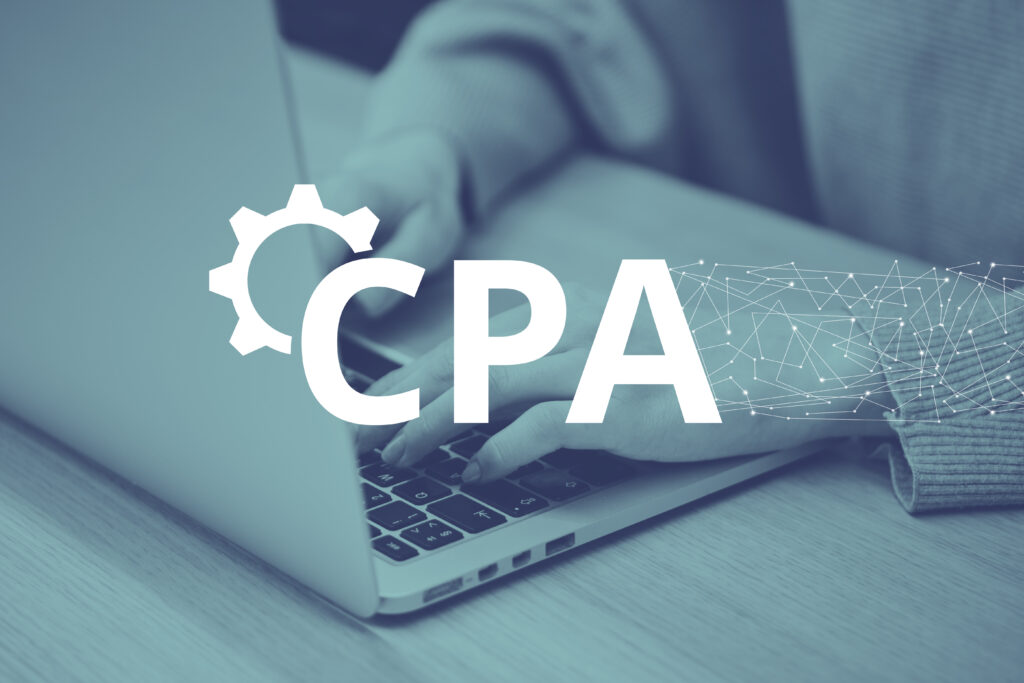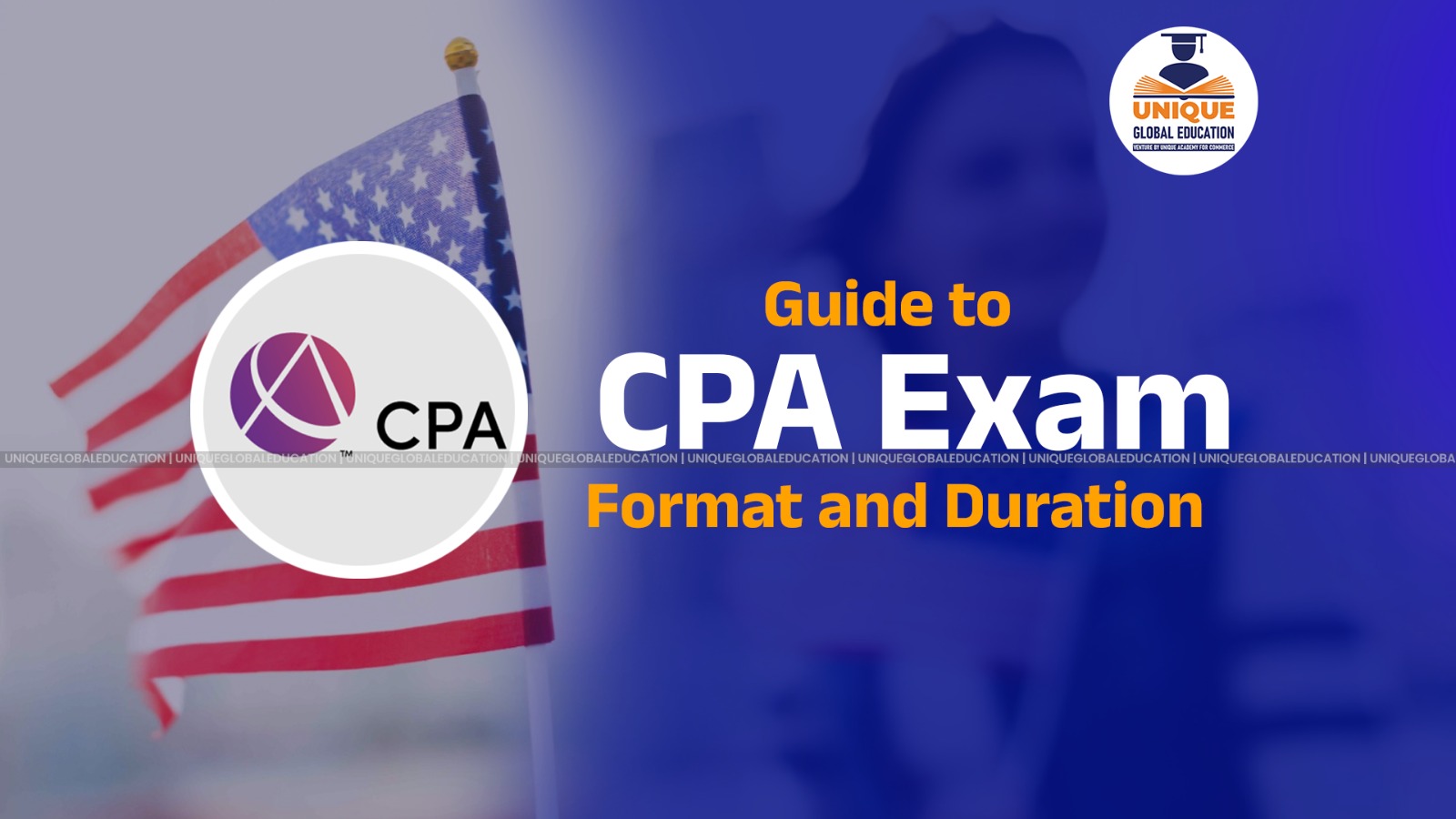Knowing the format and length of the CPA Exam is more than just helpful for anyone preparing to sit for it—it is one hundred percent necessary. This guide will explain how the test is organized and how much time you have to spend on each section, and what to expect when you get there so that you can enter with confidence.
Table of Contents
1. Overview of the CPA Exam
The CPA (Certified Public Accountant) Exam is a professional licensure test produced by the American Institute of Certified Public Accountants. It is created to evaluate your skills and knowledge that are essential for you to perform as a competent Certified Public Accountant.
The CPA Exam experienced a major overhaul in 2024 when the CPA Evolution initiative went into effect, incorporating a “Core + Discipline” model:

Core Sections (everyone takes these):
- AUD – Auditing and Attestation
- FAR = Financial Accounting and Reporting
- REG – Regulation
Discipline Sections (choose one):
- BAR- Business Analysis and Reporting
- ISC = Information Systems and Controls
- TCP – Tax Compliance and Planning
You must pass the four sections of the exam (three Core + one Discipline) within your state test window, generally 30 months from when you passed your first section.
2. Exam Duration
All four parts of the CPA exam is 4 hours. In other words, altogether, you will be spending around 16 hours testing over the course of several test dates. The same section may not be taken multiple times on the same day.
Here’s a breakdown:
| Section | Length | Total Questions | Weight of MCQs vs. Simulations |
| AUD | 4 hrs | 78 MCQs, 7 TBS | 50% MCQ, 50% TBS |
| FAR | 4 hrs | 50 MCQs, 7 TBS | 50% MCQ, 50% TBS |
| REG | 4 hrs | 72 MCQs, 8 TBS | 50% MCQ, 50% TBS |
| BAR | 4 hrs | 50 MCQs, 7 TBS | 50% MCQ, 50% TBS |
| ISC | 4 hrs | 82 MCQs, 6 TBS | 60% MCQ, 40% TBS |
| TCP | 4 hrs | 68 MCQs, 8 TBS | 50% MCQ, 50% TBS |
3. Exam Format
The CPA Exam is administered in testlets (groups of questions presented together) and delivered on a computer. There are a total of five testlets per section:
- Testlet 1 – MCQs
- Testlet 2 – MCQs
- Testlet 3 – TBS (Task-Based Simulations)
- Testlet 4 – TBSs
- Testlet 5 – TBSs
Multiple-Choice Questions (MCQs)
- QQT (Quick Question Testing): Four answer short questions, with varying type.
- GRADING: Each MCQ score carries the same weight Others are pretest questions which do not count for a grade but look the same as graded questions.
- Adaptive Difficulty: How you do on the first MCQ testlet can determine how easy the second (and hopefully) harder one will be.
Task-Based Simulations (TBSs)
- Type: Exercises involving cases that require the student to do research, analysis and application of topics covered in accounting.
- For instance, inputting numbers into a spreadsheet, filling in blanks which are sort of already defined or performing principal literature research.
- Scoring: each TBS has a weight of 1 within the portion of the exam. Other TBSs may also be experimental items.
4. Breaks During the Exam
You get an optional 15-minute break before you begin the TBSs after testlet three. Your clock stops during this break and it does not take away from your time allotted to complete the exam.
You are able to also take unscheduled breaks, however the clock continues running on this you must be quick with your break as well.
Get Details for US CMA Online & Face to Face Batches
5. Scoring and Passing
- Minimum Passing score: 75 (This is scaled, NOT a pass rate)
- Scheduling Weight: Not as dependent on discipline, but typically 50/50 between MCQs and TBSs (as mentioned above)
- All MCQs and all TBSs have pretest items that will appear between questions but there is no indication of whether a question is scored or unscored.
6. Timing Strategy
While four hours might seem like a lot, it can be easy to lose track of time when working through complex simulations. Below is a normal pacing guide for a four-hour segment:
| Testlet | Type | Suggested Time |
| 1 | MCQ | 45–50 min |
| 2 | MCQ | 45–50 min |
| 3 | TBS | 50–55 min |
| Break | — | 15 min (optional) |
| 4 | TBS | 50–55 min |
| 5 | TBS | 50–55 min |
This time should leave a few minutes for review at the end of a session.

7. Test Day Experience
Here’s what to expect from check-in to the final “Submit” click:
- Normal admission: Plan to arrive at least 30 minutes early to find seating together while normal seats last.
- Check in: Present 2 valid ID, sign in, have your picture taken and scan your palm veins or fingerprints.
- Security: personal items must be in a locker; you are only allowed your ID into the testing room.
- Seating: A proctor seats you at your station.
- Launch: You will complete a brief tutorial first before the exam timer starts.
- In Exam: The on-screen calculator spreadsheet and authoritative lit.
- Pause: If needed, pause for the optional 15-min break.
- Finish: Post-Exam survey, then click “Submit” to actually end the portion.
8. Scheduling Considerations
- 30 Month Window (the Rolling 30): After you pass your first CPA Exam section, you will have 30 months to complete the remaining three sections.
- Windows in Which You Can Test: The CPA Exam is available year-round so you can select any day that a Prometric Testing Center is open to schedule your exam.
- Rescheduling: When you change exam appointment, fees vary based on what side of your test date with all fees depending.
9. Why Understanding Format and Duration Matters
The structure and timing for those of you ready to walk in; helps you know:
- Manage stress on test day.
- Allocate study time appropriately.
- Practice under realistic conditions.
- When you take the actual test, be sure to pace yourself.
10. Key Takeaways
- 4 hours * 4 sections = 16 hours
- Each section has 5 testlets—2 MCQ and 3 TBS.
- Both MCQs and TBSs are incredibly essential to passing.
- Those 15 minute break is optional and it is your best friend — use it.
- What about passing: A score over 75 scales.
- You can earn the remaining over the next 30 months following your initial pass.
For the CPA Exam, half the battle is knowing content and the other half of the battle is knowing process. The more of a handle you have on how much time you actually get, what kinds of questions are asked, and where the balance in scoring lies, you can easily transform those four hours from an episode to be viewed by people who get some form a sick thrill out of others screwing up their lives into a blowout victory drafted in private instead of that panicky race against the clock.
Study for the test, but also rehearse for it if you want to go in swinging.
Get Details for US CMA Online & Face to Face Batches



